[/caption]
KENNEDY SPACE CENTER – The cargo canister for NASA’s final space shuttle mission was delivered to the sea-side launch pad at the Kennedy Space Center (KSC) in Florida and hoisted up the pads massive launch pad gantry early Friday (June 17).
NASA is targeting a July 8 blastoff of the STS-135 mission with Space Shuttle Atlantis and the last cargo a shuttle will ever haul to space. The 60 foot long cargo canister is the size of a shuttle payload bay.
The STS-135 mission is the very final flight of the three decade long Space Shuttle Era and is slated for liftoff at 11:26 a.m. EDT from Launch Pad 39A. The flight is scheduled to last 12 days and will be NASA’s 36th and last shuttle mission bound for the International Space Station (ISS).
Atlantis will deliver the Italian- built “Raffaello” logistics module to the orbiting outpost.
Raffaello is loaded full with about 5 tons of critical space parts, crew supplies and experiments to sustain space station operations once the shuttles are retired at the conclusion of the STS-135 mission, according to Joe Delai, NASA’s Payload Processing Manager for the STS-135 mission.
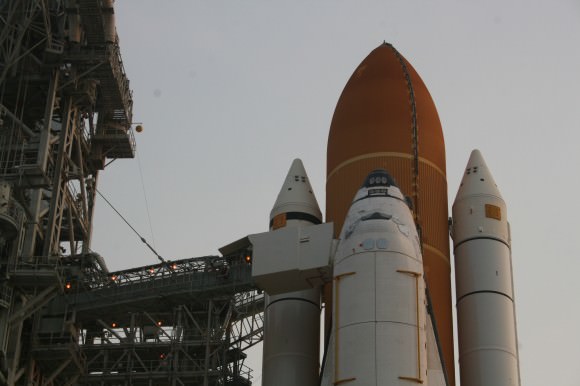
Astronauts will walk through the White Room at left to enter Atlantis crew cabin. Credit: Ken Kremer
NASA technicians at the launch pad have closed the cocoon-like Rotating Service Structure (RSS) back around the orbiter to gain access to the vehicles payload bay. Atlantis’ payload bay doors will be opened Saturday night and the cargo will be installed into the shuttle’s cargo bay on Monday (June 20).
The secondary payload is dubbed the Robotic Refueling Mission (RRM) – a sort of “gas station in space” said Delai, who spoke to me at Pad 39A.
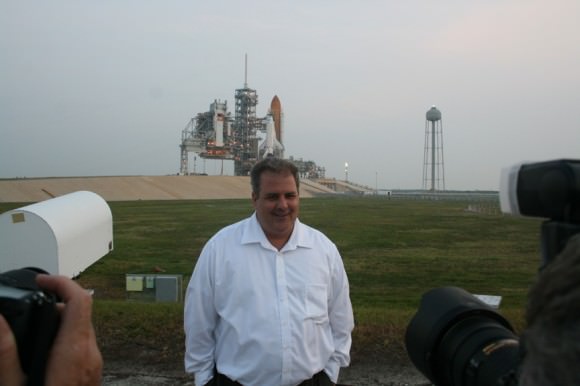
Pad workers were also busy on Saturday (June 18) with work to begin the collection of high resolution X-ray scans of Atlantis External Tank at certain support ribs on the shuttle facing side, according to Allard Beutel, a NASA KSC shuttle spokesman.
“The technicians will scan the tops and bottoms of 50 support beams, called stringers, to confirm that there are no issues following the tanking test conducted by NASA this week at the launch pad”, Beutel said.
The reinforcing stringers were installed after minute cracks were discovered during the propellant loading of 535,000 gallons of super cold liquid oxygen and hydrogen into the fuel tank during the initial launch attempt of the STS-133 mission in November 2010. “No problems are expected and this work is just being done as a precautionary measure.”
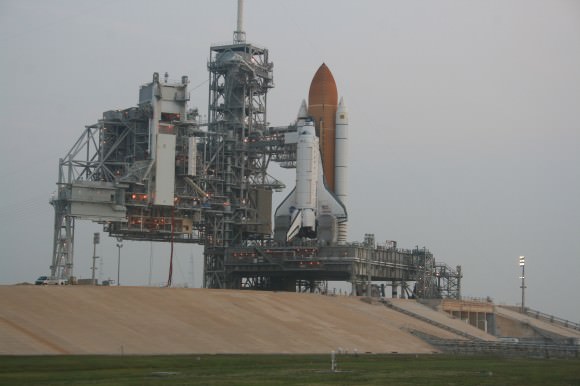
The last ever shuttle flight will blast off on July 8. Credit: Ken Kremer
During the tanking test, a potential fuel leak was discovered in a hydrogen fuel valve in Space Shuttle Main Engine No. 3, the right most engine.
“Technicians will spend the next week swapping out the engine valve with a new one and conduct tests to verify the fix solved the problem,” Buetel told me. “NASA expects the work can be completed with no delay to the July 8 launch.”
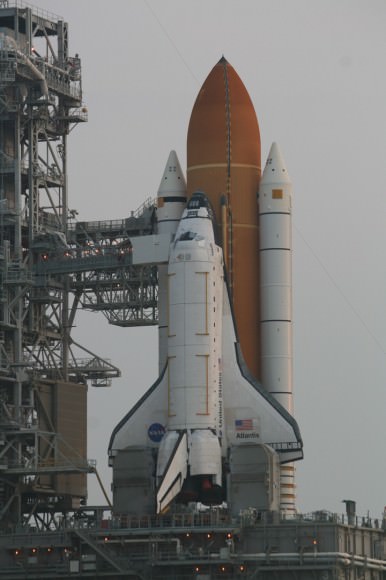
The engine leak would have been a show stopper and scrubbed the launch if this had been the real countdown on July 8, said Beutel – to the huge disappointment of the 500,000 to 750,000 folks expected to pack the Florida Space Coast.
The hydrogen valve replacement and X-Ray scans are being completed in parallel out at the pad.
The STS-135 crew of four veteran shuttle astronauts is led by Shuttle Commander Christopher Ferguson. Also aboard are Pilot Doug Hurley and Mission Specialists Sandy Magnus and Rex Walheim.
The crew will fly to into the Kennedy Space Center from Houston aboard their T-38 jets on Monday for several days of pre-launch training.
I will be covering the STS-135 launch for Universe Today on site at the KSC Press site, location of the world famous countdown clock.
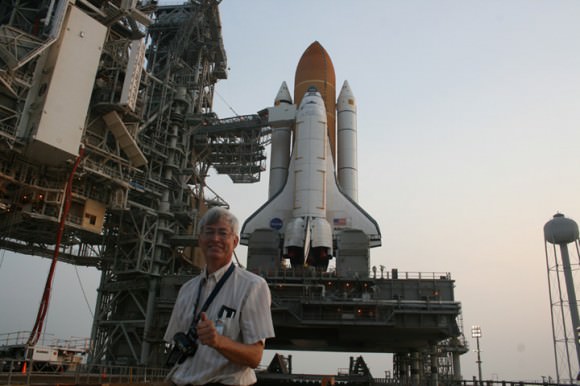
Read my prior features about the Final Shuttle mission, STS-135, here:
Last Ever Shuttle Journeys out to the Launch Pad; Photo Gallery
Atlantis Goes Vertical for the Last Time
Atlantis Rolls to Vehicle Assembly Building with Final Space Shuttle Crew for July 8 Blastoff


feliz viaje
I worked in the press room for the launch of the Ares IX. I’ll miss the fun this time. Best of luck for a flawless launch!